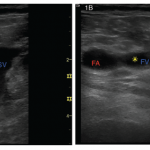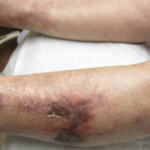SAN FRANCISCO—Presentations from three leading experts in hematology during the ACR/ARHP 2008 Annual Meeting’s symposium, “Controversies in Prevention and Management of Hypercoagulable States in Rheumatic Disease Patients” revealed a common theme. Despite continual development of newer antithrombotic and antiplatelet agents, the successful management of patients in these complex clinical settings is best based—for now—on a combination of empiric wisdom and current clinical data, evolving practice guidelines, effective communication with colleagues (especially orthopedic surgeons), and thorough patient education.
A Balancing Act
The ideal antithrombotic, suggested Thomas L. Ortel, MD, PhD, director of the Anticoagulation Management Service and director of the Duke Clinical Coagulation and Platelet Immunology Laboratories at Duke University Medical Center in Durham, N.C., would be a targeted therapy with a rapid onset that requires very little monitoring. The agent’s action would also be reversible and would allow for a patient-specific regimen. But, he concluded, medicine is not there yet.
Newer antiplatelet drugs with a rapid onset, such as cangrelor, are more effective than clopidogrel in the cardiac cath lab setting. But with certain parenteral glycoprotein 2B-3A blockers, such as abciximab, patients can develop severe thrombocytopenia with bleeding. “Prasugrel is a case in point,” Dr. Ortel noted. “If you develop your anticoagulant too well, you arrive at a point of increasing complication rates.” The 13,000-patient TRITON-TIMI 38 trial, which compared prasugrel to clopidogrel in patients with acute coronary syndromes, showed significantly reduced rates of ischemic events but an increased risk of major bleeding with prasugrel.1 Fondaparinux, a synthetic pentasaccharide, has a predictable anticoagulant effect with once-a-day dosing and is effective for venous thromboembolism (VTE) prophylaxis, although it, too, is not easily reversible—a definite drawback if a patient requires urgent surgical intervention.
For ongoing anticoagulation therapy, clinicians will continue to face what Dr. Ortel characterized as “the shortcomings of warfarin therapy.” Because warfarin has such a narrow therapeutic index, the best methods to predict initial dosing and monitor therapy continue to elude researchers and clinicians. Despite recent buzz about polymorphism genotyping, there are no prospective data confirming its utility, said Dr. Ortel. Ordering the test for cytochrome P450 269 (CYP2C9) and vitamin K epoxide reductase (VKOR C1) increases costs (the test costs $200) and introduces a delay of two to three days for results. Some guidance can be obtained at www.warfarindosing.org, a free Web site launched by Brian Gage, MD, that allows the clinician to enter patients’ baseline coagulant response time (INRs), other comorbidities, and their CYP2C9 and VKOR C1 genotypes to obtain a recommended warfarin dose. The Web site is designed for initiation of warfarin therapy, and the time lag to obtain lab tests may mean that the patient is already on Day 3 or Day 4 of warfarin therapy.



